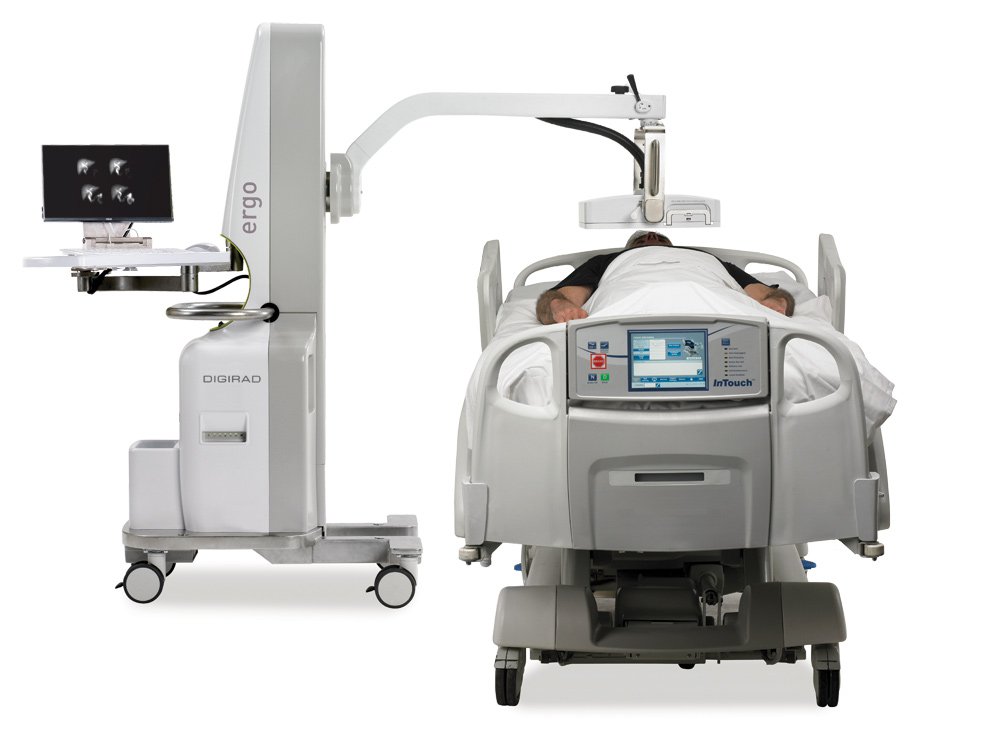Operating a busy nuclear medicine department requires a reliable and heavy-duty set of imaging capabilities. Large, expensive equipment such as PET scanners, Dual Head Whole Body / SPECT and SPECT/CT systems are the backbone of most full-service departments. But what role should a smaller, single-head gamma camera play?
Some technologists might be skeptical about the value of a smaller camera, but when you take a closer look, they are not just a smart move – a single-head gamma camera can be an essential addition. Let’s take a look at why your department should have a single-head camera.
Free Up Valuable Resources
Each patient is unique, and the goal should be to use the right tool for the right scan. While a larger scanner’s horsepower and capabilities are ideal for some scenarios, a SPECT/CT scanner could be more than is needed for a sizable group of patients. By having a smaller, single-head gamma camera available, you can perform the majority of studies more efficiently and free up the more valuable equipment. At Digirad, we have seen departments considering a second SPECT/CT camera opt for a general-purpose, single-head camera and vastly increase the larger camera’s availability.
Plan for the Unexpected
You never know when equipment will fail or break. But, you can be ready for a failure by having a back-up plan. Think about it this way – you don’t need a spare tire until you have a flat. And then it becomes very, very important. While it’s not feasible to run 100% of your department with a single head camera, it can get you through while repairs or interim solutions are secured. An alternate imaging option keeps your department running and prevents costly downtime.
Protect Your Patients
New technology has allowed single-head, general-purpose nuclear medicine cameras to become portable. A camera like the Digirad Ergo can perform a wide range of nuclear medicine studies without being tethered to the nuclear medicine department. Portable imaging with a single-head gamma camera dramatically reduces the risk of infection by removing the need to transport a patient who is critical. With a reduced risk of illness, infection spread, or injury during transport, the total hospital stays for patients can also be reduced.
Increase Patient Satisfaction
Having a single-head gamma camera in your department is a smart way to increase patient satisfaction. The camera’s extra bandwidth will reduce wait times and allow patients to access vital imaging services faster. For many studies, a single-head camera might be a better fit, and patients can receive a more specialized study by using a smaller camera. Additionally, portable nuclear cameras such as the Ergo add a new convenience level by transporting the department to the patient. They get to stay in the relative comfort and security of their room while the imaging equipment comes to them. For many ill or injured patients, transport of any kind brings tremendous discomfort – this is one way hospitals can improve their experience.
Sure, But What Can a Single Head Camera Really Do?
The short answer is more than you think. Don’t let the size fool you; a single-head general-purpose nuclear camera can perform most of the studies done with larger equipment.
In fact, the Digirad Ergo can perform 99% of the inpatient studies performed in a nuclear medicine department. Here is a small list of studies that can be done with the single-head gamma camera:
- Thyroid Uptake and Imaging
- HIDA
- Renal Flow and Function
- Renal Perfusion
- GI Bleed
- Gastric Emtpying
- MUGA – Gated Blood Pool Imaging
- Molecular Breast Imaging
- Y90 Mapping
- Brain Imaging
- Bone Marrow
- Tagged Red / White Blood Cell Imaging
- Salivary Imaging
- Dacroscintigraphy
- Bone Scan
- Lung V/Q Scan
- Lymphoscintigraphy
- In111 Infection Imaging
- I 131 Thyroid Ablation
The Role of a Single-Head Camera
A single head camera can never completely replace the modern workhorses that most nuclear medicine departments rely on. However, smart hospitals see the overall value they bring to the department and are investing in this technology.
By diversifying your nuclear imaging technology, you can get more from your existing investment, be more flexible, and better serve the goal of treating patients.
Want to learn more about single-head gamma cameras? Explore the Ergo or contact the Digirad team to learn more.




